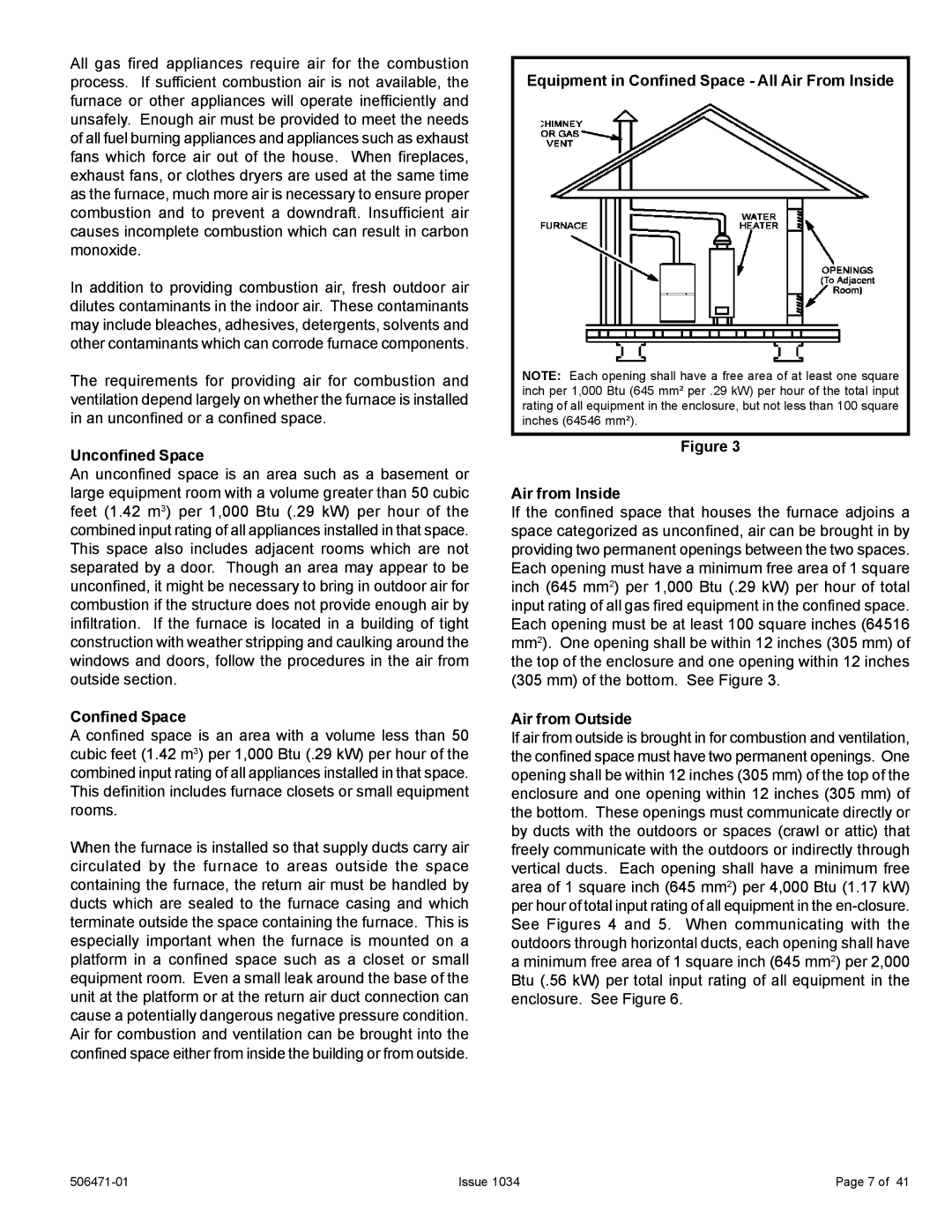80G1UH2V, A80UH2V specifications
Allied Air Enterprises has made a significant mark in the HVAC industry with its innovative and high-performance heating and cooling solutions. Among its impressive lineup, the Allied Air Enterprises 80G1UH2V and A80UH2V models stand out for their efficiency, reliability, and advanced features.The 80G1UH2V is a two-stage gas furnace that operates on natural gas or propane. With an efficiency rating of up to 80%, it provides excellent heating performance while contributing to cost savings on utility bills. Its durable cabinet design ensures long-lasting performance and protection from harsh weather conditions, making it ideal for a variety of home environments.
One of the key features of the 80G1UH2V is its two-stage heating capability. This technology allows the furnace to operate at a lower capacity to maintain consistent temperatures during milder weather, reducing energy consumption and noise. When the temperature drops significantly, the furnace automatically shifts to high capacity, delivering the required heat promptly. This flexibility not only creates a more comfortable living space but also enhances energy efficiency.
The A80UH2V model shares similar traits with the 80G1UH2V but offers some additional features. It includes a variable-speed blower motor that optimizes airflow throughout the home. This innovation not only increases comfort levels but also facilitates quieter operation. The A80UH2V's advanced control system provides precise temperature management and can be integrated easily with smart home systems for enhanced automation.
Both models are designed to operate quietly, with noise levels minimized through improved insulation and sound-dampening technologies. This makes them suitable for residential applications, where comfort and peace are a priority. Additionally, they come equipped with a self-diagnostic control board that makes troubleshooting and maintenance simpler and more efficient.
Durability is another critical characteristic of both the 80G1UH2V and A80UH2V. They feature a robust heat exchanger made from high-quality materials, enhancing longevity and reliability. With these models, homeowners can expect reliable performance for years with minimal upkeep.
In summary, the Allied Air Enterprises 80G1UH2V and A80UH2V models deliver exceptional heating solutions through advanced technology, efficiency, and reliability. Their innovative features cater to the modern homeowner's need for comfort, control, and energy savings, making them excellent choices for residential heating needs.

